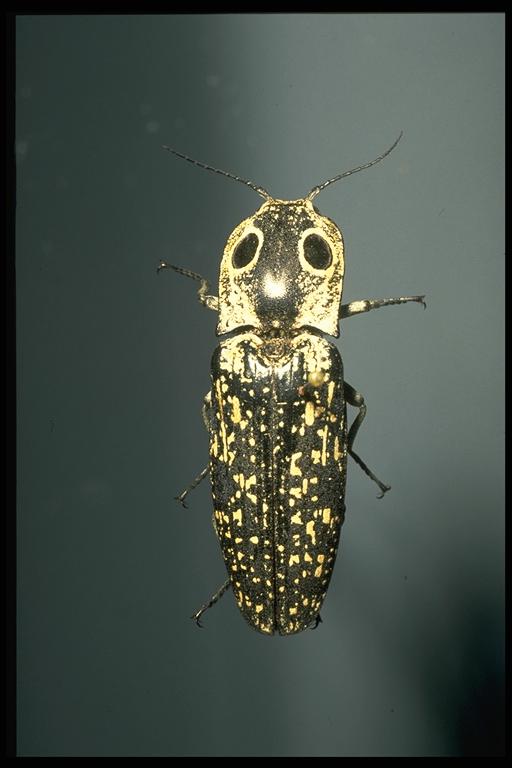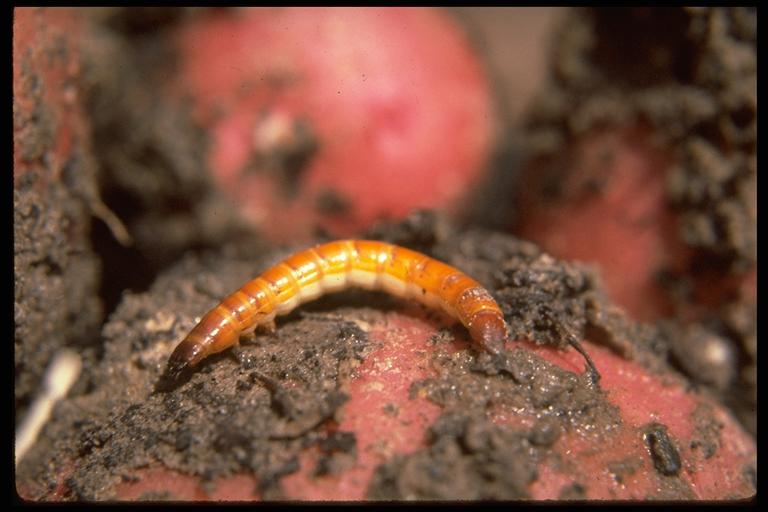
Eyed click beetle, Alaus oculatus. Photo by Drees.
Common Name: Click beetle; wireworm
Scientific Name: Varies
Order: Coleoptera
Description: Click beetles are elongated, parallel-sided and usually bear backward projections on the side corners of the shield behind the head (pronotum). They are somewhat flattened and range in size and color by species. Smaller species are about 1/4 inches long. Most species are brown to black in color, although some have reddish and yellowish colors and patterns. The eyed click beetle, Alaus oculatus (Linnaeus), reaches 1-½ inches in length and is beautifully marked with prominent oval eye spots on the pronotum and mottled gray wing covers. When placed on their backs, these beetles characteristically “click”, snapping their thoracic segments (prothorax and mesothorax) to cause their bodies to flip in the air to right themselves. Larvae, called “wireworms,” are usually hard-bodied, brownish, ½ to 2-½ inch long and cylindrical, with three pairs of tiny true legs behind the head and a flattened, and an ornamented shield-like segment on the tail end of the body.
The false click beetles (Eucnemidae) are similar to click beetles, and some species can even “click.” They are less common and usually occur in wood just beginning to decay. The Texas beetle, Brachypsectrida fulva LeConte (Coleoptera: Brachypsectridae) somewhat resembles a 3/16-inch long click beetle without the clicking mechanism. There is only one species in this family.

A wireworm, (Coleoptera: Elateridae). Photo by Drees.
Life Cycle: Biology varies by species. In general, adults and larvae overwinter in the ground, becoming active in the spring. Adult females dig burrows and lay eggs around the base of host plants. Eggs hatch within a few weeks and larvae develop through several molts over a period of time from several months to over 4 years. They pupate in the cells within the soil in late summer or fall, and emerge as adults a few weeks thereafter. Generations can greatly overlap.
For additional information, contact your local Texas AgriLife Extension agent or search for other state Extension offices.
Literature: Arnett 1985; Borror et al. 1989; Swan & Papp 1972; Metcalf et al. 1962.